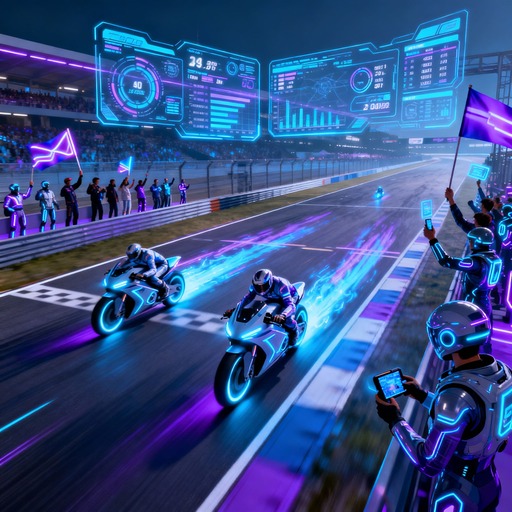Dive into the World of MotoGP Technology
Have you ever wondered how the thrilling speed and precision of MotoGP racing can impact your daily motorcycle ride? MotoGP isn’t just a platform for adrenaline-fueled competition; it plays a crucial role in pioneering advancements that trickle down to everyday motorcycles. Let’s explore how MotoGP technology, developed for elite racers, improves the performance, safety, and experience of your street-legal rides.
The Evolution of Motorcycle Technology
MotoGP, the pinnacle of motorcycle racing, is a hotbed of innovation. Engineers and designers here are constantly pushing the boundaries to shave seconds off lap times and boost rider safety. These track-side advancements inevitably weave their way into the motorcycles we see on the roads. How does this transition occur, and what does it mean for the average rider? Let’s take a closer look at some key technologies.
1. Aerodynamics
Initially developed to reduce drag and improve downforce on the racetrack, advanced aerodynamic designs now feature heavily in commercial motorcycles. MotoGP technology has led to sleek, sportbike fairings that enhance stability at high speeds on highways while also improving fuel efficiency.
2. Electronics and Rider Aids
- Traction Control: Once exclusive to MotoGP bikes, traction control systems are now commonplace, helping everyday riders manage power effectively and maintain control in varying conditions.
- ABS (Anti-lock Braking Systems): Initially refined for race conditions, ABS technology prevents wheel lock-up during sudden braking and is a standard feature, enhancing safety across all motorcycle types.
- Ride-by-Wire Systems: Offering more precise throttle control, ride-by-wire systems developed for MotoGP tunes engine responses through electronics for smooth and efficient power delivery on commercial bikes.
3. Materials and Construction
MotoGP machines are constructed using cutting-edge materials such as carbon fiber and titanium, chosen for their strength and light weight. These materials now find application in higher-end consumer models, reducing overall bike weight while enhancing performance.
Enhancing Rider Experience
The transfer of MotoGP technology also deeply influences the rider’s experience. From improved ergonomics inspired by race bike design to advanced digital interfaces offering a wealth of information at your fingertips, these advancements give all riders—from weekend warriors to commuting enthusiasts—a taste of the pro-racing thrill and precision.
The Future of Motorcycle Design
As MotoGP technology continues to evolve, so will the motorcycles we ride every day. Aspects such as adaptive suspension systems, augmented reality helmets, and smart connectivity are being rigorously tested under the extreme conditions of MotoGP circuits. These innovations promise a future where riding is safer, more enjoyable, and more connected than ever before.
Conclusion
MotoGP technology serves as a crucible for some of the most advanced motorcycle innovations, ultimately greatly enhancing what we get to experience on our daily rides. From enhanced safety features to materials that drastically shave off weight, these technological transitions represent the cutting-edge of motorcycle design and engineering. The next time you hop on your bike, remember that part of your ride’s DNA was born out of pure racing passion and technological brilliance.


